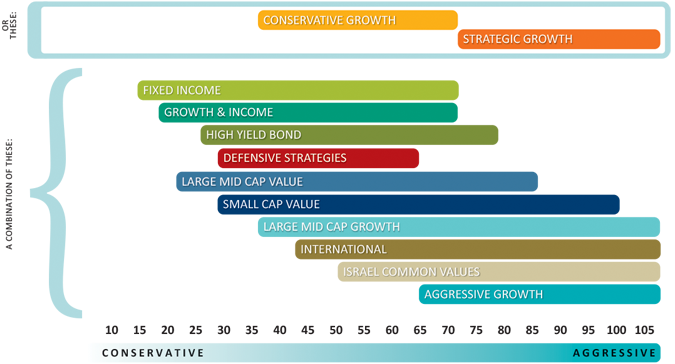I will not access this website if that registration is withdrawn. Distributed by Timothy Partners, Ltd. Member FINRA.
Fixed Income Mutual Fund
Generate a high level of income consistent with prudent investor risk.
Timothy Plan’s Fixed Income fund is designed to provide current, stable income and play an integral role in a balanced portfolio. Focused on bonds with higher ratings, or debt securities primarily from companies with an above average credit rating, the fund strives to deliver consistent income, while preserving capital investment. Call +1 (800) 846-7526 or chat online if you need any assistance.
Objective
The Fund's objective is to generate a high level of current income consistent with prudent investment risk. To achieve this goal, the Fund normally invests in a diversified portfolio of debt securities. These include corporate bonds, convertible securities, U.S. Government and agency securities and preferred securities. The investment manager purchases securities for the Fund that are investment grade, with a rating of at least "BBB" as rated by Standard & Poor's or a comparable rating by another nationally recognized rating agency.
Strategy
In managing its portfolio, the Fund concentrates on sector analysis, industry allocation and securities selection deciding which types of bonds and industries to emphasize at a given time, and then which individual bonds to buy. The Fund attempts to anticipate shifts in the business cycle in determining types of bonds and industry sectors to target. After first considering the moral filters, the Fund seeks out securities that appear to be undervalued within the emphasized industry sector. By selecting high quality issues with strong defensive characteristics and attractive upside potential the manager seeks to provide Fund investors with superior returns with lower risk than the Barclays Capital U.S. Aggregate Bond Index, the most conservative standard fixed income benchmark.
Risk & Strategy
We have created a worksheet to help you decide which funds might meet your investment needs, Asset Allocation Investor Worksheet. Answer the questions, then add your points to consider an appropriate strategy. The scale attempts to create a spectrum of the funds using a broad brush criteria of aggressiveness/risk. The scale and order of funds may not be accurate at any point in time, because as the markets shift and change, so will the relative positions of the funds. This should be considered as a general guideline and not a scientifically created/maintained analytical tool. You may want to consider a more aggressive or more conservative diversification than your score indicates.

IMPORTANT LEGAL INFORMATION
- Total Returns include change in share price, assume reinvestment of all distributions, and reflect the deduction of fund expenses and applicable fees. Total Returns With Sales Charge: returns reflect the deduction of the stated sales charge. Total returns, distribution rate, and yields reflect any applicable expense reductions, without which the results for those impacted funds would have been lower.
- For more information on any of our funds, contact your financial advisor or download a free prospectus. Investors should carefully consider a fund's investment goals, risks, sales charges and expenses before investing. The prospectus contains this and other information. Please read the prospectus carefully before investing or sending money.
- Timothy Plan funds offer multiple share classes. Share classes are subject to different fees and expenses, which will affect their performance. In general, Class A shares have a maximum initial sales charge; Class C shares have a 1% contingent deferred sales charge; Class I shares have no sales charges nor Rule 12b-1 fees.
- All investments involve risks, including possible loss of principal. Value securities may not increase in price as anticipated or may decline further in value. While smaller and midsize companies may offer substantial opportunities for capital growth, they also involve heightened risks and should be considered speculative. Historically, smaller- and midsize- company securities have been more volatile in price than larger-company securities, especially over the short term. The fund may invest in foreign securities, which may involve special risks, including currency fluctuations and economic and political uncertainty. These and other risks are detailed in the fund's prospectus.
- Performance data represents past performance, which does not guarantee future results. Current performance may differ from figures shown. Investment return and principal value will fluctuate with market conditions, and you may have a gain or loss when you sell your shares.
FOOTNOTES
- As of Date: 12/19/25
- Price: Value of one share on a given day.
- Change: From last quoted price.
- Israel Common Values: Fund commenced on October 12, 2011.
- Growth & Income: Fund commenced on October 1, 2013.
- NAV Notes: Net asset values fluctuate. Shares are not insured or guaranteed and are redeemable at current net asset value, which may be more or less than the original cost. Class C Share redemption may also be subject to a contingent deferred sales charge. Class C Shares commenced trading February 2, 2004. Performance of fund classes will differ.
Please see prospectus for details.

